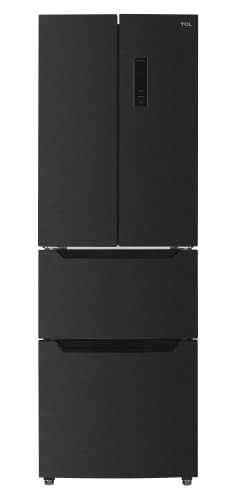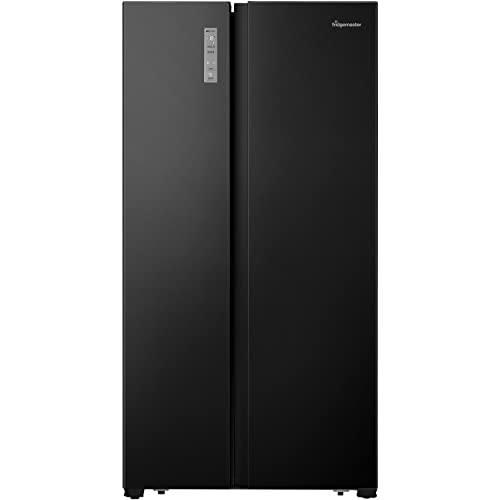cheap-fridge-freezer9410
cheap-fridge-freezer9410
The Best Fridges And Freezers Tricks To Make A Difference In Your Life
Understanding Fridges and Freezers: The Essential Kitchen Appliances
Fridges and freezers are two of the most vital home appliances in contemporary cooking areas. These home appliances serve a vital role in food conservation and waste decrease by making sure that perishable items stay fresh and safe for intake. This article delves into the various kinds of fridges and freezers, their performances, and essential factors to consider for choice and maintenance.
Kinds of Refrigerators
The marketplace uses a variety of refrigerator types, each designed to fulfill different consumer requirements. Below is a list of the most typical types of fridges:
-
Top-Freezer Refrigerators
- Most common type.
- Freezer compartment is located above the refrigerator area.
- Generally more affordable and energy-efficient.
-
Bottom-Freezer Refrigerators
- Freezer is located at the bottom.
- Enables much easier access to fresh products at eye level.
- Frequently includes pull-out drawers for better company.
-
Side-by-Side Refrigerators
- Refrigerator and freezer areas are surrounding.
- Perfect for narrow kitchens and permits simple access to both compartments.
- Often includes water and ice dispensers.
-
French Door Refrigerators
- Integrates a bottom freezer with double doors at the top.
- Deals sufficient storage and elegant designs.
- Frequently includes functions like temperature-controlled drawers.
-
Compact Refrigerators
- Smaller sized size perfect for restricted spaces.
- Commonly used in dorm spaces, studio apartments, or as secondary fridges.
Table 1: Comparison of Refrigerator Types
| Type | Benefits | Downsides | Typical Size |
|---|---|---|---|
| Top-Freezer | Budget-friendly, energy-efficient | Less practical access to the freezer | 14-30 cu. ft. |
| Bottom-Freezer | Easier access to fresh food | Freezer can be harder to arrange | 19-30 cu. ft. |
| Side-by-Side | Easy gain access to, water/ice dispenser | Narrow vs. storage space | 22-30 cu. ft. |
| French Door | Stylish, roomy, arranged | More costly | 20-30+ cu. ft. |
| Compact | Space-saving, portable | Minimal storage | 1.7-5.5 cu. ft. |
Types of Freezers
Freezers are a similarly essential device for food conservation. They are available in various styles developed to fit different family requirements. Consider the list below types:
-
Upright Freezers
- Operate like a basic refrigerator with vertical storage.
- Simpler to organize with racks and compartments.
-
Chest Freezers
- Large, horizontal design usually providing more storage area.
- Maintains temperatures better throughout power blackouts.
- More energy-efficient than upright models.
-
Portable Freezers
- Compact units perfect for outside activities or little spaces.
- Typically utilized for camping journeys or as momentary storage.
Table 2: Comparison of Freezer Types
| Type | Advantages | Downsides | Normal Size |
|---|---|---|---|
| Upright Freezer | Simpler to organize | Less energy-efficient, more flooring area | 5-20 cu. ft. |
| Chest Freezer | Holds more products, energy-efficient | Harder to organize | 5-25 cu. ft. |
| Portable Freezer | Compact and flexible | Limited storage capacity | 1-10 cu. ft. |
Key Features to Consider
When picking a fridge or freezer, customers need to bear in mind several features that can boost performance:
- Energy Efficiency: Look for models with the ENERGY STAR certification to conserve on electricity bills.
- Storage Capacity: Evaluate storage needs based upon family size and eating habits.
- Temperature level Control: Some appliances use digital controls for accurate temperature level settings.
- Adjustable Shelving: Customizable shelving permits for ideal company.
- Water and Ice Dispenser: Offers convenience but can take up important area inside.
- Sound Level: Sound scores can influence comfort, particularly in open-concept homes.
Pros and Cons of Having a Fridge and Freezer
While Best Fridges and freezers are indispensable technologies, they also have particular advantages and downsides:

| Pros | Cons |
|---|---|
| Protect food life expectancy and lower waste | Require routine maintenance |
| Allow bulk purchasing and meal prepping | Can be pricey to buy and run |
| Deal convenience and fast access to food | Inhabit significant kitchen area space |
Maintenance Tips
To ensure longevity and ideal efficiency of fridges and freezers, think about the following upkeep suggestions:

- Regular Cleaning: Clean the interior and outside occasionally to avoid buildup of dirt and germs.
- Check Seals: Inspect door seals regularly for leakages to preserve efficiency.
- Temperature Settings: Keep the fridge at 34-38 ° F and the freezer at 0 ° F for ideal food preservation.
- Defrost as Needed: Chest freezers ought to be thawed frequently to preserve effectiveness.
- Clear Air Vents: Ensure that airflow isn’t blocked to enhance energy effectiveness.
Frequently asked questions About Fridges and Freezers
Q1: How long can food be saved in a freezer?A: Most foods can be kept in a freezer for a number of months. Meats and poultry typically last 4-12 months, while vegetables can last up to 8-12 months.
Q2: How often must I clean my fridge and freezer?A: It is recommended to clean your fridge and freezer every 3 to 6 months, or as needed when spills occur. Q3: Can I put hot food straight in the fridge?A: It is advised to cool hot food to room temperature before positioning it in the fridge to prevent
raising the temperature level inside the appliance. Q4: Why is my fridge running constantly?A: This could be due to a malfunctioning thermostat, clogged coils, or door seals that aren’t working effectively. Fridges and freezers are invaluable
assets to modern homes, offering vital services for food storage and conservation.
Comprehending the different types, features, and upkeep requirements can assist customers select the ideal devices for their needs and maximize their functionality. Embracing energy-efficient models not just supports sustainable practices however likewise contributes to considerable savings on utility expenses, making informed choices more essential than ever.



